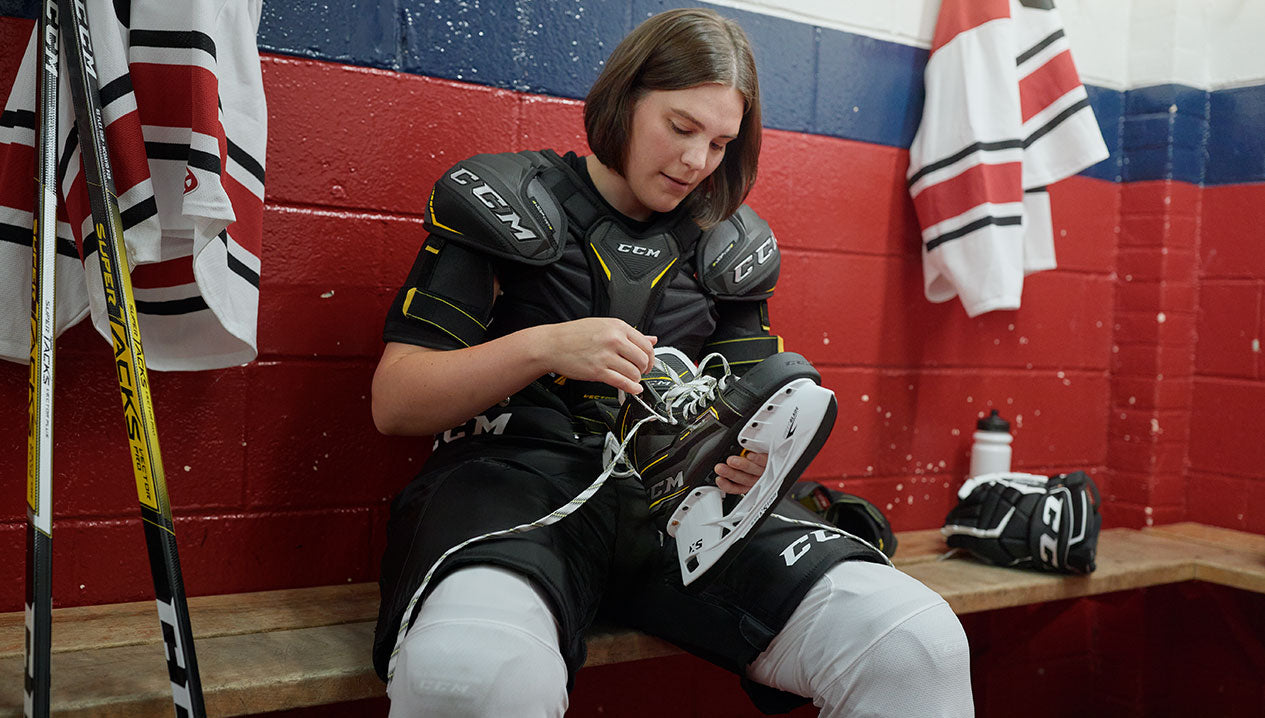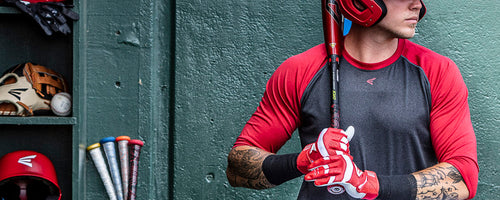Everything You Need to Know About Wood Baseball Bats

Long before the introduction of aluminum and composite models (and the rules of governing bodies), baseball bats were fashioned from any available scrap wood. It was only in 1859 that a rule was passed to limit the size of bats: the dimension would be round, not more than 2.5 inches around the thickest part, and could be of any length to suit the batter. A decade later the rule added that the maximum length of a bat would be 42 inches long.
To meet the changing rules and satisfy the demand for “America’s pastime”, professional woodworkers began building bats using lathes, and focused on finding better sources of wood. Better quality woods have a strong grain, which prevents the wood from splitting, but also has qualities that react well with the ball to absorb, and then release energy.
Wood bats are now used by elite and pro players. It takes a skilled player to swing a wood bat as they are slower and heavier than their aluminum counterparts, and have fewer sweet spots to connect with the ball, so contact with the ball has to be precise.
Here's An Overview of Wood Bats and Their Properties:
Types of Wood
Ash
Porous, lightweight, has a large sweet spot and creates a fast bat head speed. This wood bat has air pockets, which make it supple, but more likely to break. Great for line-drive hitters. Ash has very straight grains.
Maple
Popular in the MBA, maple wood is more dense, which gives more pop, and heavy. This weight makes it more end-loaded, and therefore you need bat head speed to get it through the zone. Great for power hitters. Typically because of the weight, it is not used for young players.
Composite
Combination of woods for example bamboo and maple. Combining materials gives the performance and hit of a heavy bat, but with the lightweight properties to help the swing process. Great for new players as it is durable, pops well, and feels like a maple bat.
Wood bats normally do not have a warranty, due to the inconsistencies of wood grains, the physical power of the batter, and improper hitting. Composite bats usually do have a limited manufacturer’s warranty, as they have been made to be more durable.
Length & Width
When considering length, stand with your arms at your side and the bat on the ground. The knob of the bat should be cupped in the palm, and the elbows have a slight bend. If the arm is straight while holding the bat, it is too short. If the elbow has more than a 20-30 degree bend, it is too long.
A simple trick to test the weight of a bat is to hold it by the knob and extend it in front of you, thumb on top, at shoulder height using your dominant hand. You then attempt to write the word “baseball” in the air using the bat. If it is difficult for you to control the movement of the bat, or your wrist drops, then it is too heavy for you.
Barrel Durability
Wood is a natural product, with variations and differences of hardness. There are several treatments that can be applied to increase the durability.
Clear Coat
Sealant that is painted on the bat that seals the wood grains which helps harden the wood.
Flame Treatment
The barrel is burned over a flame which removes the oxygen cells within the wood, removing the gaps, thus hardening the wood.
Bone Rubbing
A beef femur is rubbed over the wood of the barrel. The oils in the bone act as a sealant into all the porous openings, hardening the wood grain.
Cupping
Because wood is a natural product, you cannot control with precision the weight and density of each piece of lumber. By cupping the end, which is removing some wood at the end of the bat leaving a concave depression, you can balance the weight of the bat. If the end of a bat is not cupped, you will know that all the weight is at the end of the bat, which works well for power hitters and physically stronger players. Cupped ends, or balanced weighted bats, allow more bat speed and are recommended for younger players.
Grip
Some bats have thick profile handles, while others have thinner grips. Depending on the hand size of the player, forearm strength and desired bat head speed, this will be a personal choice for each player.
Learn to Hit “Label Up”
The grain is an important component in the strength of the wood used. The grains are what makes an impact with the ball and the pop or exit of the ball off the wood is influenced by the lay and the tightness of the grain. The tighter the grain, the better the wood. No two wood bats will ever be the same because of the natural properties of wood.
By making sure to hit with the “label up”, the batter is ensuring that they are hitting on the strongest and tightest area of the wood grain.
We Fit Your Game
No matter your style of game, level of play, or budget, you can trust our professional fit experts at Source for Sports to leave wit the equipment and gear that's right for you.
Find the store nearest you to have our Baseball Specialists get the bat that’s right for your experience and desired performance today. At Source for Sports, We Fit your Game.
For expert advice on baseball gear and equipment that is right for your game, level of play, and budget, come see us at your local Source for Sports baseball store near you. We Fit Your Game.
Join Source Nation to get the latest news on product launches, Source Exclusive product lines, tips and tricks for parents and players, and more!



